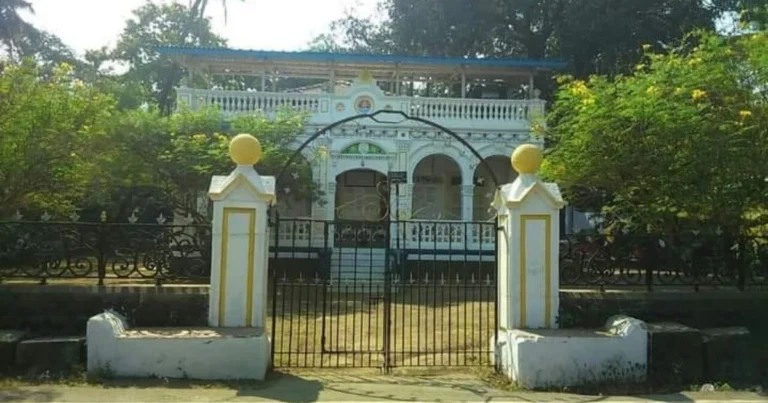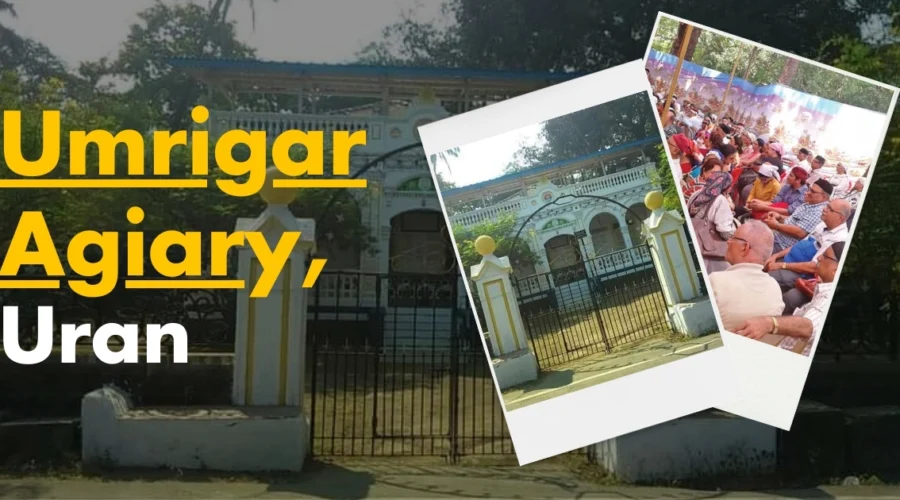Umrigar Agiary Uran: History, Challenges | Umrigar Fire Temple
It is in a significant Zoroastrian fire temple, the Umrigar Agiary, located in Uran, that a splendid history and deep spiritual soundness have found dwelling. The Temple is a place of great importance for the Parsi community, offering an arena for worship, rituals, and connection with their ancient faith. In this blog, we are going to talk about the history of the Umrigar Agiary, what challenges it faces, and what it means to the lives of its devoted people.
History of Umrigar Agiary

Uran Umrigar Agiary is located on the coastal town of Uran near Mumbai in Maharashtra. The name Agiary holds great significance for the local Parsi community, whose ancestors were Zoroastrians that migrated to India from Persia (present-day Iran). It has been named after the Umrigar family, who were some of the original founders of the temple.
The fire temple was built with the intention of serving as a focal place for the prayer and performance of rituals among the members of the Parsi community. In Zoroastrianism, the sacred fire symbolizes purity and forms an indispensable part of religious ceremonies. Like other fire temples, Umrigar Agiary has an everlasting flame, which symbolizes the eternal presence of Ahura Mazda, the supreme Zoroastrian god.
For years, the Agiary has served as a cornerstone in the spiritual life of the Parsi community in Uran, providing a space for prayer, reflection, and communal gatherings. Led by the Dastur’s, priests at the Umrigar Agiary lead the worship rituals in Avestan, which is the sacred language of Zoroastrianism.
Challenges Faced by Umrigar Agiary
Though it enjoys extensive spiritual significance, like several other Zoroastrian temples, Umrigar Agiary is beset with multiple challenges today. It is these problems of social and economic character affecting the long-term viability of the temple; also in terms of continuity of its religion.
- Declining Parsi Population
Dwindling Parsi population is one of the pressing challenges that the Umrigar Agiary and several other Zoroastrian temples are facing in India. The community is caught in a demographic crisis with extremely low birth rates and high rates of emigration. The younger lots now move to urban areas or abroad in search of better economic opportunities. Because of that, the once-glorious Zoroastrian socio-cultural lives of small towns like Uran are continuing to shrink, resulting in fewer attendees at Agiary for regular prayers and religious events, which directly impacts the sustainability of the temple. - Cultural Disconnect
Running the Agiary and its adjacent services where the sacred fire resides is an expensive affair. The dwindling member base means that the Parsi population is decreasing, which translates into lesser donations and sponsorship for the temple maintenance and renovation. Besides, many elderly fire temples also need repairs and modernization, thus camouflaging the expenses. - Financial Constraints
With each passing day, the younger generation is becoming farther and farther apart from traditional religious practices, making the continuation of ceremonies and customs from the Parsi heritage decades ago. The younger Parsis, with their modern ways of life, may not hold the Agiary rituals in the same esteem, so with this point, we see a drop in active engagement in worship.
The Worship Experience at Umrigar Agiary
In spite of these innumerable difficulties, Umrigar Agiary is alive, thriving, and serving as a very active worship house for the local Parsi community. The Agiary serves as an ideal location for serene sounds, meditations, prayers, and rituals of all kinds that connect attendees with their invisible spiritual heritage.
At the Agiary, the main performance is that of the sacred fire, cared for by the priests with Holy Water and Sea Salt sprinkled on it. Faith takes the fire as a source of purity; devotees believe it sanctifies the soul. Worshippers, in their devotion, offered prayers, incense, and fruits to the sacred fire.
The yearly festivals include Nowruz (Persian New Year), Khordad Sal (birth of Prophet Zoroaster), and any other important days noted in the Zoroastrian calendar. This is truly one time when the Agiary is filled with an array of the Parsi community. When they come together during these festivals, the Agiary becomes a total hub of joy, celebration, and unity.
The Future of Umrigar Agiary
The future viability of the Umrigar Agiary will require both a social and financial renewal to carry on into the next generations. The Agiary must be supported through donations by the Parsi community, and it must create greater awareness about the significance of preserving their religious heritage for young generations. Building awareness through educational programs, cultural events, and contemporary outreach initiatives will help bring the establishment alive and encourage a new generation of Parsis to become actively involved in the faith.
Conclusion
It has stood as one of a few living symbols of hope for the Parsi community. Resilience, devotion, and the hope of conserving their cultural and spiritual heritage pervade the interior of the Umrigar Agiary in Uran. This temple, however, opines to be a site in decline-a cultural extinction precipitated by elements not exclusive to financial hardships, declining numbers, and deteriorating infrastructure. The beacon remains for devotees who rely on a storm for some kind of purity and spiritual fulfilment-even while merrily juxtaposing hope against despair. “As long as there will be some support from within the community and its friends, the Agiary is there to tell the rich story of Zoroastrian history in India.”




dara patel
May 4, 2025 at 2:17 pmI want to visit umrigar fire temple. but it remains locked. when i should visit.